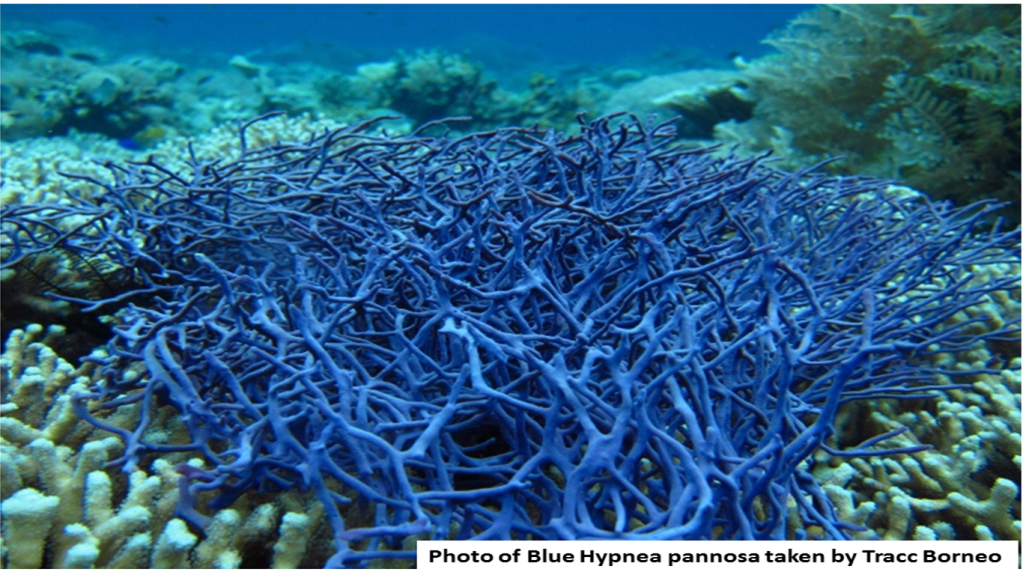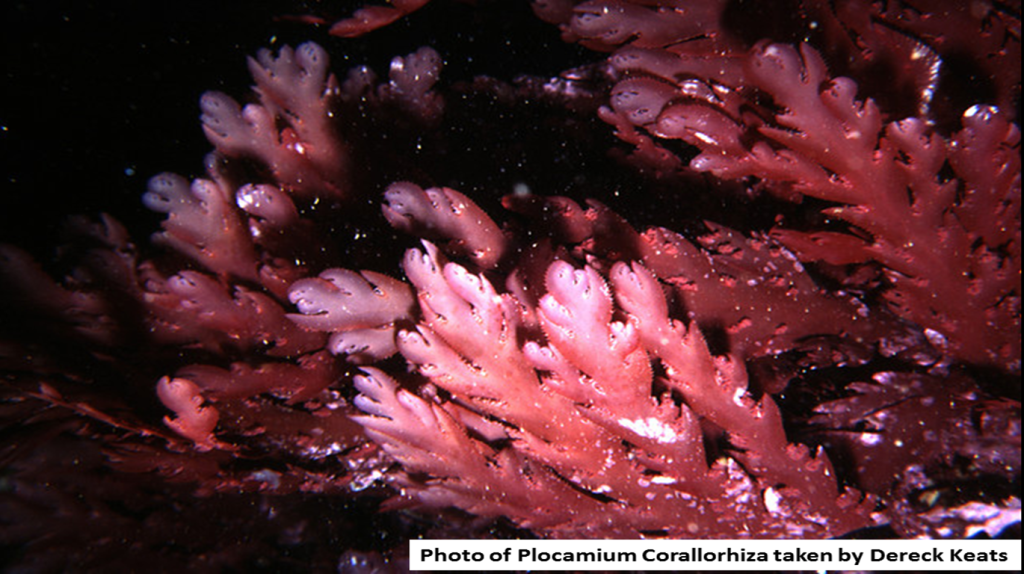Category Archives: Algae
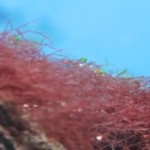
Red Hair Algae
Scientific Name: Centroceras clavulatum.
Classification: Macro Algae
Common Names: Red hair algae,
Reproduction: Non-sexual
Color: Red to Dark Red
Growth Rate: Moderate
Lighting: Moderate
Flow: Low / Moderate to High
Care level: Easy to Moderate
Appearance
Red hair algae, as the name suggest, is a type of hair algae. Due to the very nice red coloring, some hobbyist to try to keep it in there aquariums. As this is not a fast growing algae, many other types of algaes can out compete it for nutrients.
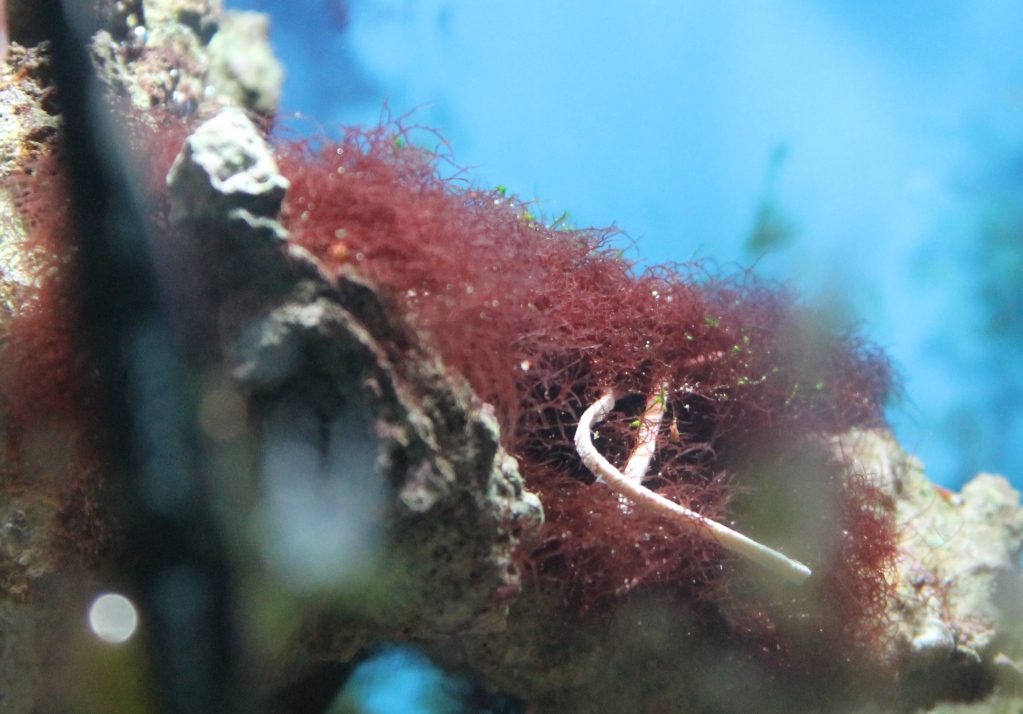
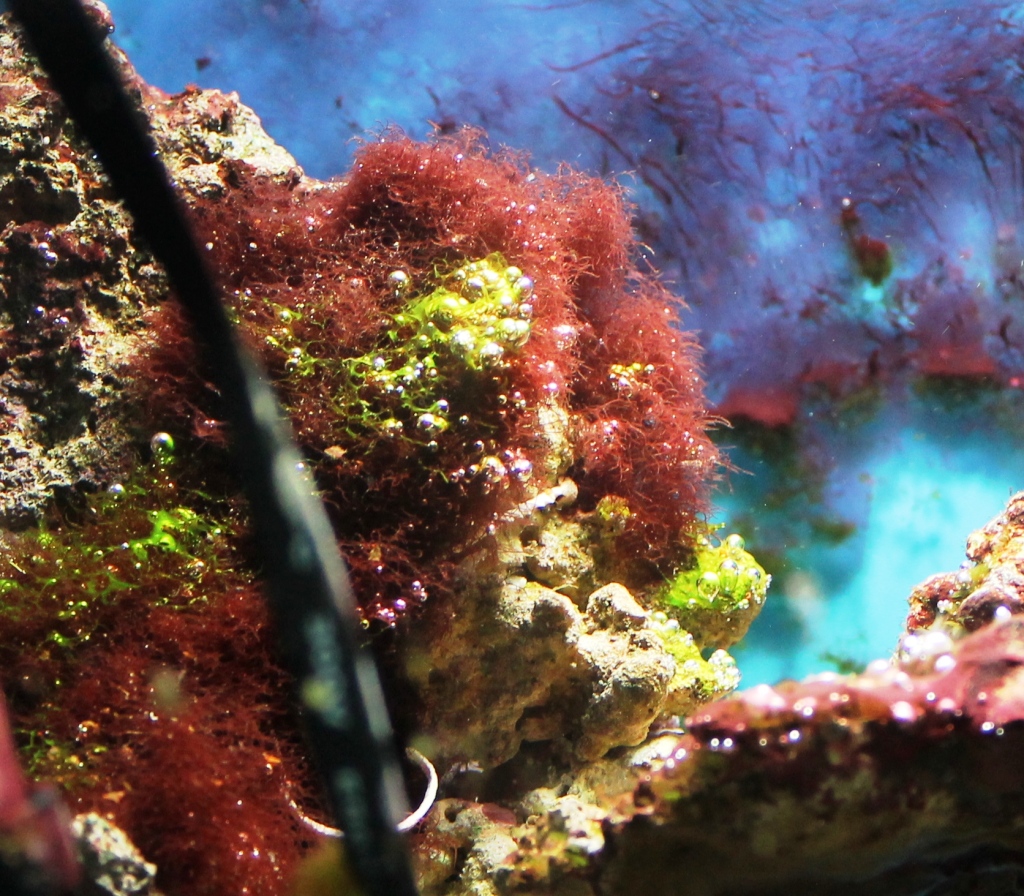
Lighting Requirements
Red hair algae will do well with moderate levels of light at the 6500K color temperature range. However, stronger levels of lighting with lower color temperatures can accelerate growth provided all other conditions / requirements are met. I have obtained very good results with high levels of CFL lighting in the 3000K range. I have also had the best results with a 18 hour photo period followed by a 6 hour period of no light.
Water Conditions
As this is a more difficult algae that will good and stable water conditions, maintaining your water parameters as described in the below link will help to ensure this algae will grow well. Red hair algae will also do best in a set-up that normally produces around 5ppm of nitrate which is the exception to the information in the below link. This macro algae will not do well with lower levels of nutrients. You may also need to consider dosing iodine if you experience difficulty keeping this algae healthy and growing
https://www.reefaquarium.com/2013/the-basics-of-marine-aquarium-water-parameters/
General Care
It is very important to maintain the correct flow, lighting and water parameters for this macro algae. This can also be a tasty treat for most crabs and tangs so it is important to make sure your current or future tank inhabitants are not known to eat macro algaes
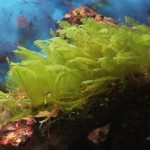
Caulerpa Macro Algae
Scientific Name: Caulerpa sp.
Classification: Macro Algae
Common Names: feather algae, green feather algae
Reproduction: Sexual and non-sexual
Color: Green
Growth Rate: Fast
Lighting: Moderate
Flow: Low / Moderate to High
Care level: Very Easy
Appearance:
Caulerpa is a fast growing macro algae. It is a green algae which sends out runners and will grow leaf like structures that will look more like features. The ‘leaves’ can grow as large as 4 inches long and ¾ of a inch wide. I find it to be very nice looking macro algae. But don’t be fooled by its looks. It can quickly spread across your rock and substrate, even chocking out corals or other forms of algae making it a rather invasive macro algae for a display tank depending on your cleanup crew and fish. Caulerpa is a great algae to grow in a sump or refugium for nutrient removal as it will quickly remove nitrates and phosphates from the water out competing many other forms of algae for these same nutrients.
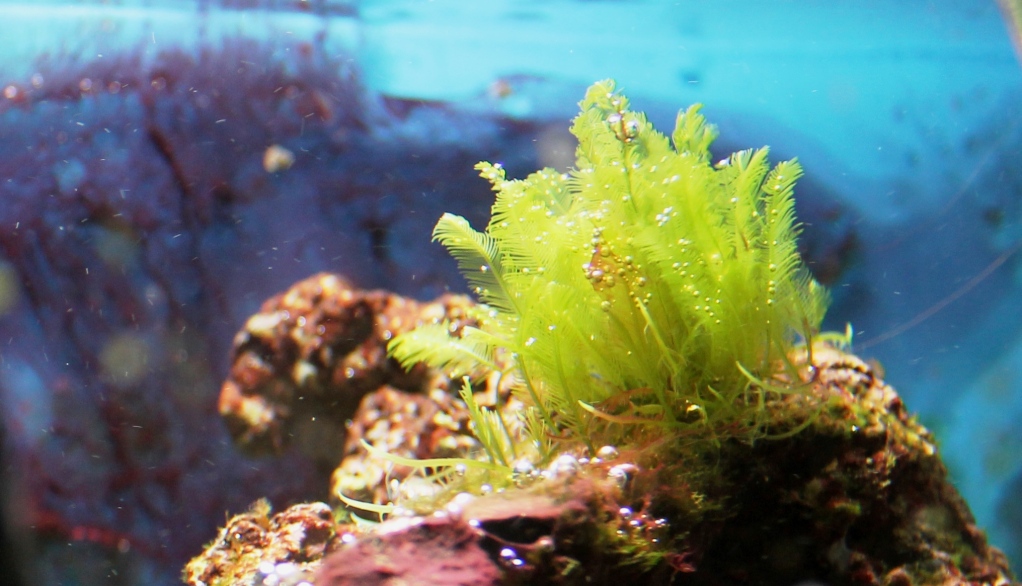
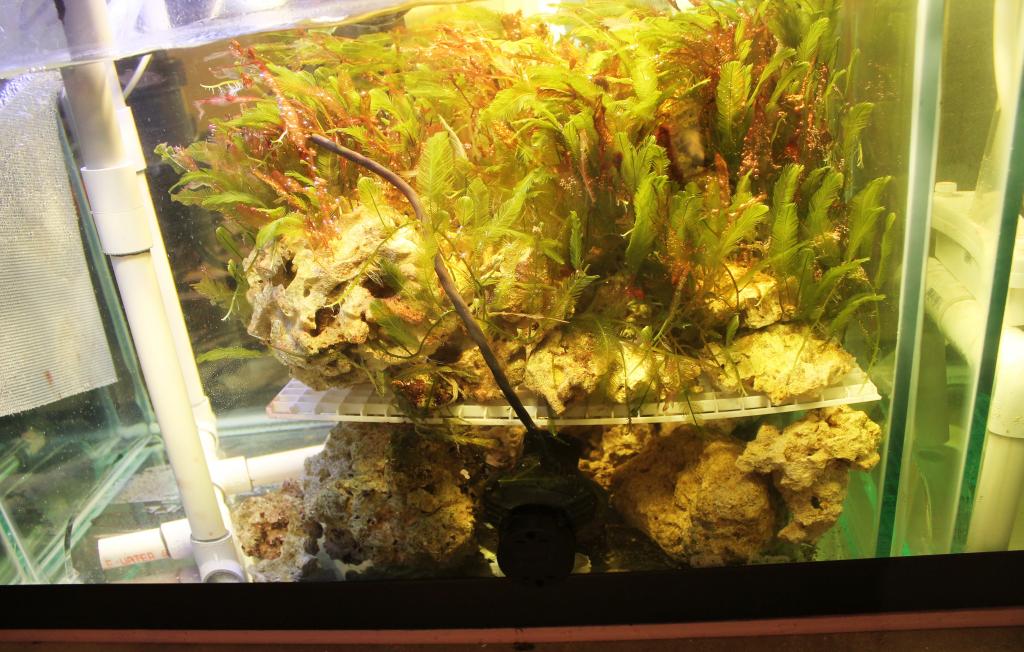
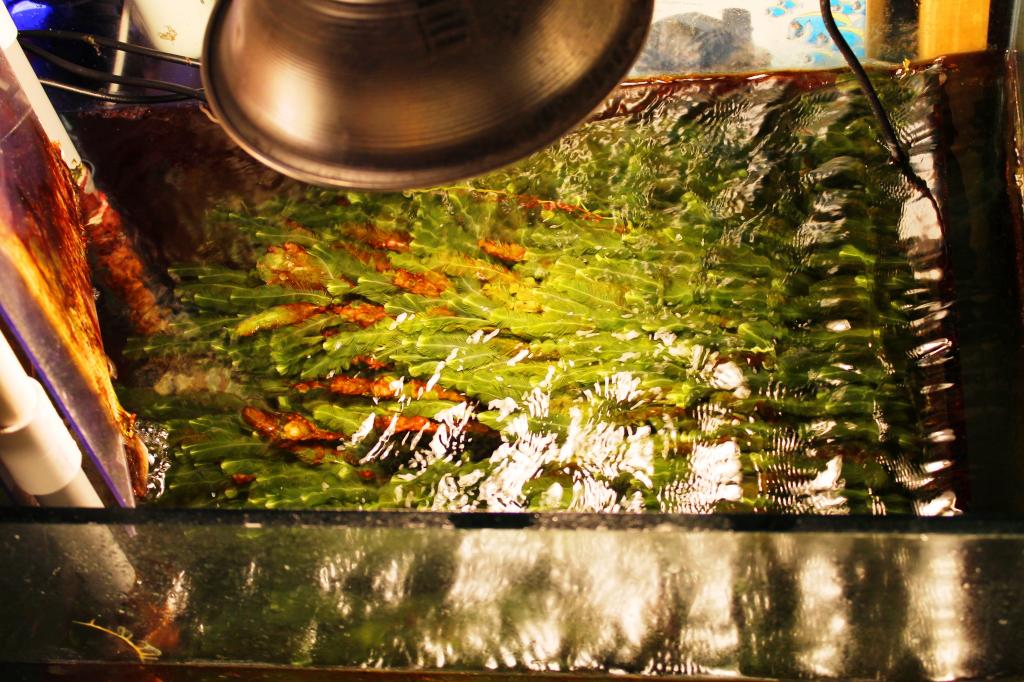
Lighting Requirements
Caulerpa macro algae will do will with moderate levels of light at the 6500K color temperature range. However, stronger levels of lighting with lower color temperatures will accelerate growth. I have even used almost pure red lighting with great results. I have obtained very good results with high levels of CFL lighting in the 3000K range. I have also had the best results with a 18 hour photo period followed by 6 hours of no light.
Water Conditions
This is a very hardly algae that will grow in almost any conditions. However, maintaining your water parameters as described in the below link will help to ensure this algae will grow well. Caulerpa will also do best in a set-up that normally produces around 5ppm of nitrate which would be the exception to the below information.
https://www.reefaquarium.com/2013/the-basics-of-marine-aquarium-water-parameters/
General Care
As this macro algae can reproduce sexually, it is best to heavy trim it back on a regular basis to help prevent this macro algae from spawning in your set-up. This also will help when using Caulerpa in a sump or refugium as removing some of the algae will also remove the nutrients absorbed by the algae and promote more growth continuing the cycle.
Caulerpa can be a tasty treat for most crabs and tangs so it is important to make sure your current or future tank inhabitants are not known to eat macro algaes.
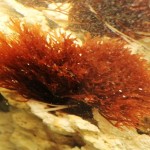
Scinaia Macro Algae
Scientific Name: Scinaia complanata
Classification: Macro Algae
Common Names: Red leaf macro algae
Reproduction: Non-sexual
Color: Red to Pink
Growth Rate: Moderate
Lighting: Moderate
Flow: Low / Moderate
Care level: Moderate to difficult
Appearance
Scinaia will have a very nice red to redish pink coloring. It will typically grow in clumps of smaller leaf like structures which get wider the closer you get to the top. These leaf like structure will also have somewhat inconsistent shapes. The clumps of scinaia will attch themselves to rocks or other objects in your aquarium. They can grow as large as 5 inches tall and 4 to 5 inches wide. This macro algae is a great addition to any display tank. Just make sure you do not have herbivorous fish or invertebrates that will typically eat macro algaes.
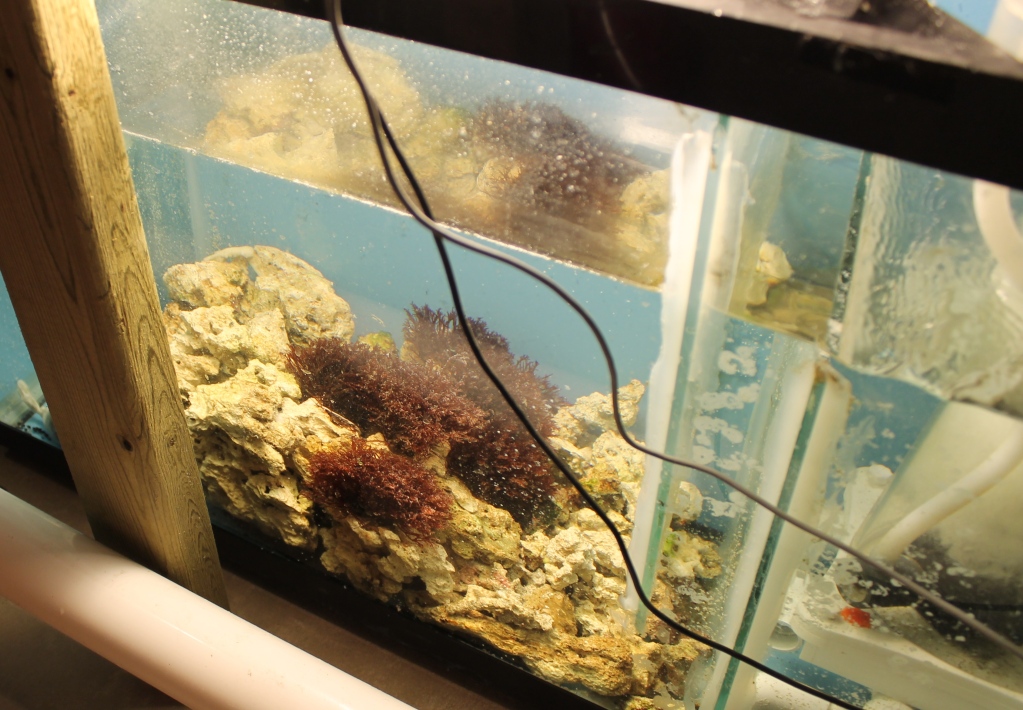
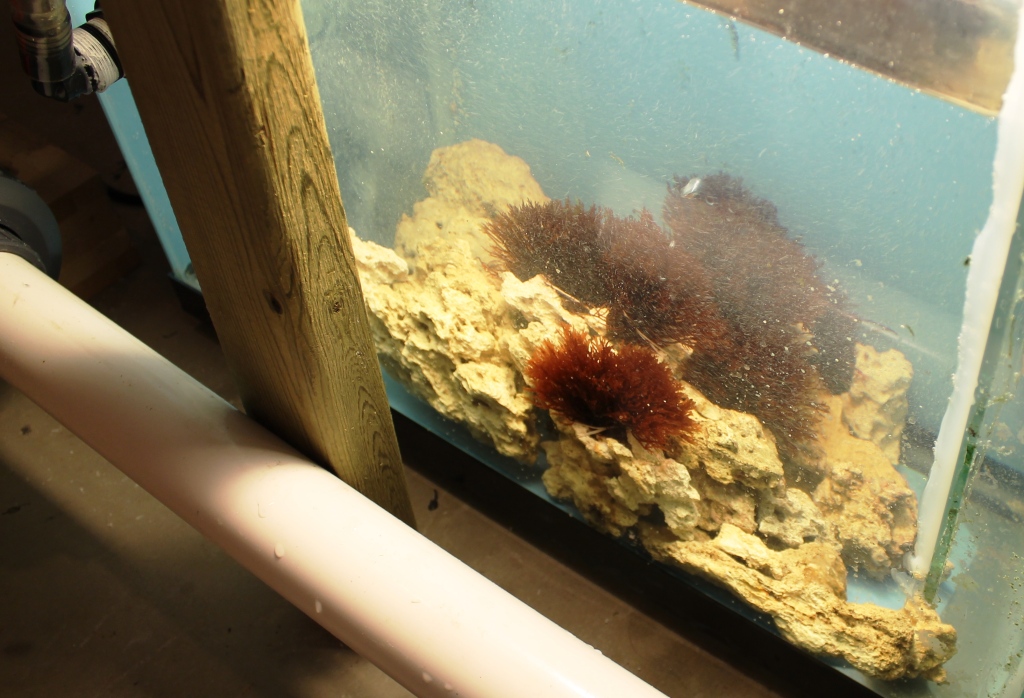
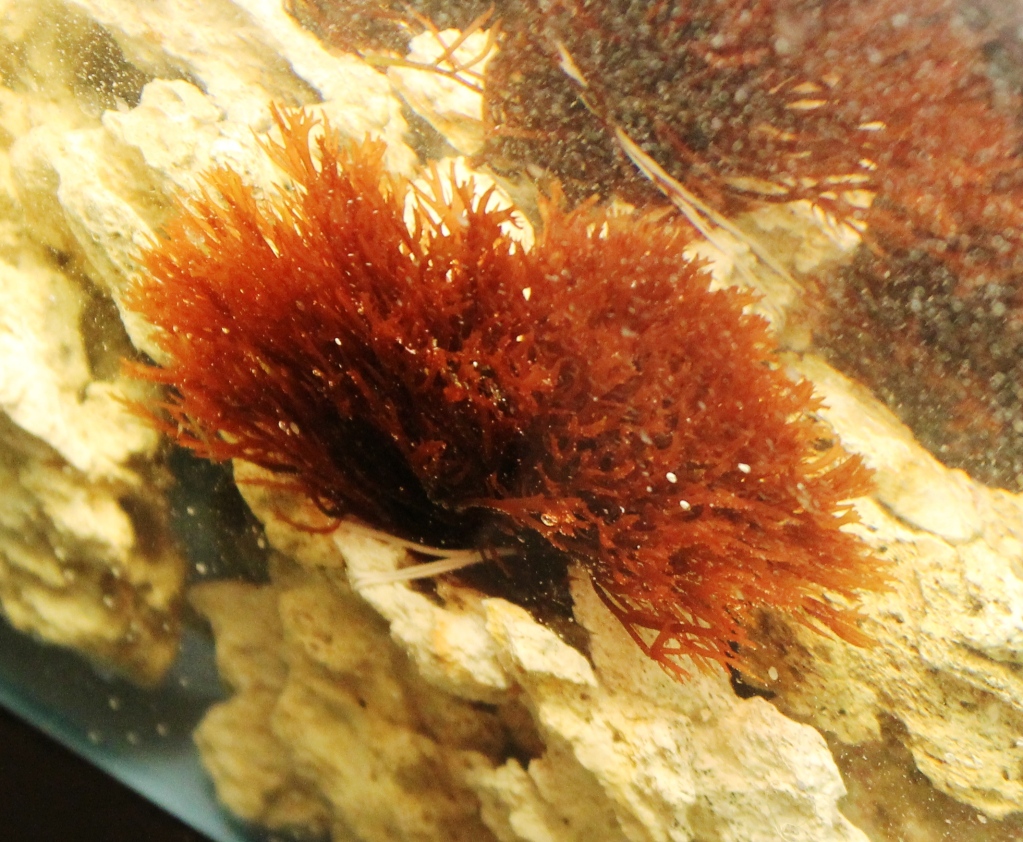
Lighting requirements
Scinaia will do best with moderate levels of light in the 6500K to 6700K color temperature range. However, I have obtained very good results with moderate to high levels of CFL lighting in the 3000K to 4000K color temperature range. I have also had the best results with a 18 hour photo period followed by 6 hours of no light.
Water Conditions
As this is a more difficult algae that will good and stable water conditions, maintaining your water parameters as described in the below link will help to ensure this algae will grow well. Scinaia will also do best in a set-up that normally produces around 5ppm of nitrate which is the exception to the information in the below link. This macro algae will not do well with lower levels of nutrients. You may also need to consider dosing iodine if you experience difficulty keeping this algae healthy and growing.
https://www.reefaquarium.com/2013/the-basics-of-marine-aquarium-water-parameters/
General Care
It is very important to maintain the correct flow, lighting and water parameters for this macro algae. It can be a more fragile algae so handling it is not recommended, just place it in a spot in your tank and leave it there. Mishandling or frequent handling can cause scinaia to die-off very quickly. You may experience a few set-backs with keeping Scinaia for the first time, but as this is such a beautiful macro algae it can be worth trying and sticking with it.
As Scinaia can be a tasty treat for most crabs and tangs so it is important to make sure your current or future tank inhabitants are not known to eat macro algaes
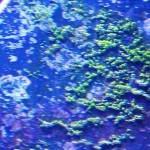
Dealing with Dinoflagellates
Dinoflagellates are microscopic single celled organisms that are photosynthetic. They are very widespread in nature. There are over 2,000 different types of Dinoflagellates that can be found in different marine and fresh water environments. This is the basis of why Dinoflagellates can be such a problem to get rid of in a marine aquarium. To make matters much more challenging, Dinoflagellates can look a lot like cyanobacteria as well as other types of algaes if you do not have firsthand experience with them.
Appearance:
One of the descriptions that I have read and remembered the best is that Dinoflagellates looks like runny brown boogers with air bubbles. While funny, that is somewhat accurate. The most common color for dinoflagellates is a shade of brown, but they are also common found in a pale brown to off white / yellow color as well as a few different shades of green. The will start to coat object inside your aquariums as well as / or coating the aquarium glass. This coating will look like slime and be one of the above mention colors. It is also common to see gas bubble trapped by it and even a stingy appearance as the gas bubbles try to escape.
Dinoflagellates are a problem to have in your aquarium for two main reasons:
A) The vast majority of commonly found Dinoflagellates in marine aquariums are toxic to most forums organisms that you will keep in a marine aquarium
B) The can cover/coat corals to the point of stress them and even killing them
Actions to take to deal with Dinoflagellates
Dealing with Dinoflagellates has driven hobbyist to break-down their aquarium and start from scratch again or even leave the hobby. In the vast majority of these situations, not quickly reacting to the problem or using a incorrect method to deal with the situation resulted in either no changes or very limited success. Quick recognition and actions taken to get rid of them are critical.
As there are over 2,000 different types of Dinoflagellates, knowing which course of action to take can be a little difficult as one method that would quickly kill-off one species of Dinoflagellates will not slightly affect another. This is also why the internet has many stories of one approach working perfectly in one person’s aquarium while not in another aquarium which results in many people arguing for or against certain approaches. It is always best to take a combination of methods at once to help ensure success in a shorter period of time. Based on my experience getting rid of this stuff, I would suggest taking a the below describe approaches:
1) Reduce available nutrients in the water
2) Add additional granular activated carbon to your set-up (catalytic activated carbon is the best)
3) Black-out all lighting for a period of 24 to 72 hours followed by a reduction in the photo period
4) Reduce feedings to every second day
5) Manually remove as much of the Dinoflagellates as possible every day
6) Set you skimmer to over skim requiring the cup to be emptied at least twice daily
7) Use a 200 micron filter sock.
The above actions have worked for me on two different occasions in two different. If you do see progress after 4 to 5 weeks with the above steps, there are a few other things you can try.
1) While maintaining the above sets, stop completing water changes
2) Increase your magnesium levels to 1400 ppm to 1600ppm
3) Increase and maintain the pH to 8.3 to 8.5
4) Add a refugium or algae scrubber
5) Start bacteria dosing
6) Change brands of salt and start using RO/DI water if you are not already
1) Reduce available nutrients in the water
Reducing the nitrates to 2ppm or less and keeping the phosphate levels to undetectable levels will help kill off the Dinoflagellates. Using a good phosphate remover and carbon dosing are the two of the most common approaches to achieve this. The theory behind the nutrient reduction is that when dinoflagellates are in a very low nutrient environment, the bacteria inside their bodies will reproduce to the point where they will die off. This is one time that you cannot trust your test kits while you have a lot of dinoflagellates in your aquarium as they will consume nitrates and phosphates almost instantly. You have get assume the levels are high, take steps to reduce them, and start testing once they are on their way out. The following thread explains carbon dosing: https://www.reefaquarium.com/2012/carbon-dosing-in-laymans-terms/
2) Add additional granular activated carbon to your set-up (catalytic activated carbon is the best)
The reason for this is that most of the dinoflagellates found in aquariums is also toxic to fish and inverts. This is why you can commonly find dead snails in a aquarium with dinoflagellates, they try to eat it and end up ingesting the toxins which kills them.
3) Black-out all lighting for a period of 24 to 72 hours followed by a reduction in the photo period. As Dinoflagellates are photosynthetic, this will cause a large scale die-off, and when followed by a reduced lighting period, it will go a very long way to help prevent thier return.
4) Reduce feedings to every second day
This will allow you to remove nutrients from the water even before they are added. Feeding every second day for extended periods of time will not harm or effect the health of your fish
5) Manually remove as much of the Dinoflagellates as possible every day. Siphon these little devils out of your tank each day. Clean up everything you can so you will not allowing them to reproduce and spread even further in your aquarium
6) Set you skimmer to over skim requiring the cup to be emptied at least twice daily the dinoflagellates for nutrients. In addition, it will help to keep your carbon dioxide levels low. Just remember with each skimmer cup you empty, replace the same water volume in the aquarium with freshly made salt water.
7) Use a 200 micron filter sock in your set-up.
This can help filter out any free floating dinoflagellates from the water that your skimmer may not remove
Other options to try when the above actions do not help after about 4 to 5 weeks of trying.
1) While maintaining the above mentions steps, stop completing water changes.
As dinoflagellates will use trace elements from the water, the theory is that stopping water changes, you can eventually starve them out. Through the replacement water from the manually cleaning and empting the skimmer cup, you will be replacing some of the water though. This would be one of the last things that I would recommend trying
2) Increase your Magnesium level to 1400ppm to 1600ppm.
This has shown to be effective in a few different types of dinoflagellates.
3) Increase and maintain the pH to 8.3 to 8.5. Maintaining a higher pH can cause some types of dinoflagellates to die off. The following link explains it a lot better that I can. This would be one of the last things that I would recommend trying as well. If not done correctly, you can cause damage/stress to corals and fish. The following thread will explain this a lot better than I can: http://www.reefkeeping.com/issues/2006-11/rhf/
4) Add a refugium or algae scrubber
These both will help to remove nitrates, phosphates and a few other certain trace elements that some dinoflagellates will need to survive. Please note, you cannot alter your pH or Mag levels if you are trying to use a algae scrubber or refugium
5) Start bacteria dosing
Sometimes the common sold bacteria can out compete dinoflagellates for certain resources in the water.
6) Change brands of salt
Dinoflagellates do need certain trace elements from the water. If you were to change your bands of salt, you could be removing these trace elements causing the dinoflagellates to die off. Starting to use RO/DI water with 0 TDS (Total Dissolved Solids) will also help if you are currently using tape water.
Preventing Dinoflagellates
The best advice that I can give you is to have a properly planned tank and to have your water parameters in line at all times. The below links explain this in a little more detail should you want some more information.
https://www.reefaquarium.com/2013/the-basics-of-marine-aquarium-water-parameters/
https://www.reefaquarium.com/2012/marine-aquarium-maintenance/
https://www.reefaquarium.com/2013/common-approaches-to-filtration-in-marine-aquariums/
The below links can help you identify other types of nuisance marine algaes.
https://www.reefaquarium.com/2012/dealing-with-nasty-algae-break-outs/
http://www.saltcorner.com/AquariumLibrary/browsesection.php
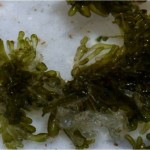
Dealing with Nasty Marine Algae Break-outs
This article is about the nasty marine algae that can plague some people to the point of wanting to get out of the hobby. The good news here is that once you learn more about what most algae need, you can control them and prevent them from becoming a problem again. This doesn’t include any information about macro algae. Having a little bit of agae in you tank is not a bad thing, and (in my opinion) can give your aquarium a more natural look and feel. When the algae gets out of control is when we need to take steps to control it.
There is a common belief that a new tank will go through various stages of different nuisance marine algae as the tank cycles and then matures over the next 6 months to a year. In my opinion and experience, that is not completely accurate. Although there will likely be some small swings in some parameters as the tank matures, you don’t have to go through any excessive algae stages by properly planning your set-up and applying some preventative measures from the start. Some algae here and there is normal, but a lot of it is not. I will share some of my experiences (both the good and the bad) at the end of this article.
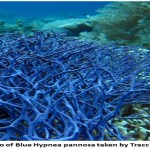
Macro Algae – Ever Wanted a Planted Saltwater Aquarium ?
Have you ever wanted a planted salt water tank? For the most part, that is not possible as there really are no truly salt water plants as there are for fresh water planted tanks. But we can keep many different types of macro algae that will grow into plant like structures adding a variety of colors and looks to your tank. You can develop your tank into a complete marine ecosystem with macro algae, and it is an inexpensive way to design a great looking tank. The below pics are a few examples:
